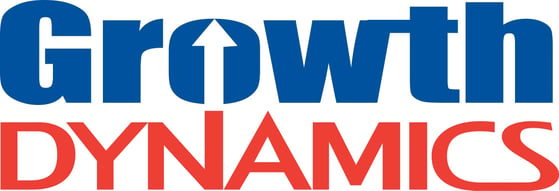 I was looking for some inspiration to be able to sit down and write a new blog post. We haven't posted as many as we normally do as Growth Dynamics has been very, very busy. It's a great busy. A busy that we can feel building some momentum and we are excited to see where this momentum take us this year. Is the same happening for you?
I was looking for some inspiration to be able to sit down and write a new blog post. We haven't posted as many as we normally do as Growth Dynamics has been very, very busy. It's a great busy. A busy that we can feel building some momentum and we are excited to see where this momentum take us this year. Is the same happening for you?
I came across this article, "Building And Sustaining That Q1 Feeling Is All About Optimism," by Christine Dagenais on Forbes.com. It is a great article. I like that despite the article being focused on leaders, I think all of her points can be applied to individuals as well. We do often remind our students of High-Performance Sales that they ARE the owner of their own company. If you are leading others or just yourself, this read is a good reminder on how to build yourself a successful year.
Give it a read and share your thoughts on our LinkedIn or Facebook posts.
Building And Sustaining That Q1 Feeling Is All About Optimism
That intangible but palpable first quarter feeling — bringing a renewed sense of purpose, direction and focused energy — is even more pronounced this year. It is built from optimism.
Optimism is a state of mind, an emotion, a perspective — and it is also a choice. Leaders who choose optimism by asking what's possible, build resiliency and sustain the momentum and vigor of the Q1 feeling long after March 31.
There are four ways leaders can support a culture of optimism to pull the Q1 feeling through spring and into the back half of 2021:
1. Create certainty where possible.
Following a year of unprecedented uncertainty, clear and transparent goals provide a sense of shared purpose that drives motivation and discretionary effort. This drive is naturally supported by the desire to leave the constraints of last year behind. Adopt an open approach to sharing the direction of the organization and your vision as a leader. Create the sense that, while we may not be able to control everything that will happen, we do know where we’re going.
Leaders can capitalize on this by being open about strategy and key performance indicators where possible. It is also important to include other, less data-driven measures of success like energy, innovation and team culture. Ask yourself, "What does success for my team look like in 2021? What do I want to be looking back at with pride in December?" Share those more personal goals with the team and ask what they want to look back on with pride and how you can help them achieve it. This will create a culture of development rather than performance monitoring that will build your trust as a leader and inspire motivation and momentum.
2. Recognize that the future is now.
The turning of the calendar offers leaders the opportunity to intentionally set the approach for a culture of optimism. Ask yourself, "Where is the organizational focus? Is it on some future state and waiting or planning for when things change? Or is it on action now to create that future?" Build a "the future is now" approach into your communication frameworks by connecting actions today to the future goal. It is important to connect the action of your team to the outcome, rather than the outcome relying on extraneous conditions. Instead of running possibilities as, “if this, then that,” which places the importance on those outcomes, try “We can achieve X, if we execute on Y.” It is a subtle shift in the communication of forecasting and projections to your team that can create a big impact.
3. Build incremental goals.
Success begets success because people like the feeling of achievement. It really is that simple. It is the reason winning streaks in sports seem to take on a power of their own. A team becomes unbeatable not because the skill level changed, but the team’s belief in themselves as unbeatable changed. This belief makes athletes invest in the team at a higher level; they work harder and go the extra mile to support their teammates (they even play defense!). They start playing like champions because their winning streak makes them believe they are champions. The same is true in work teams. Build a winning streak for your team by including incremental measures of success in longer-term objectives.
4. Demonstrate situational leadership.
Like optimism, situational leadership is about choice. It is about understanding the situation and choosing the right leadership approach to enable the team to confront problems and create solutions. Leaders are used to solving problems by having the answers but developing team capability requires a different approach. It is about creating the space for the team to come to the table by asking questions instead of issuing directives. In this space, team members take ownership for their contributions and outcomes in a more meaningful way because they feel engaged in the process of creating solutions.
Simply asking the question, “What is your read on the situation?” or “What are your possible next steps?” instead of defining the context and directing the work will help team members see possibilities that they hadn’t before. Much like a winning streak, this ownership creates momentum, and leaders who recognize situations where they can create space can propel the continuation of increased engagement.
The four leadership approaches above all rest on a foundation of optimism. Optimism, even in times of great uncertainty, is not unfounded; it is rooted in the confidence you have in your team, organization and your own abilities as a leader. Translate optimism into tangible results through the intentional leadership behaviors of creating certainty, building the future now, igniting a winning streak and demonstrating situational leadership to sustain the Q1 momentum and engagement throughout the year.






